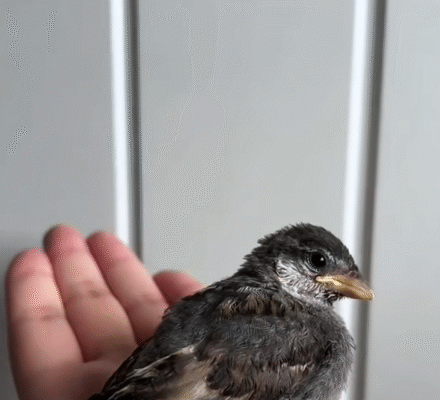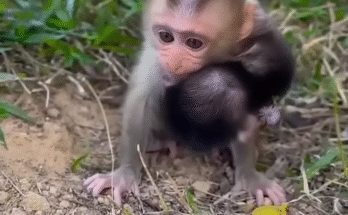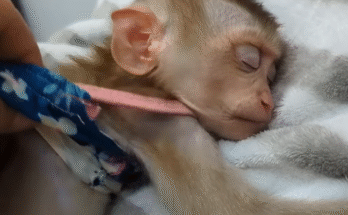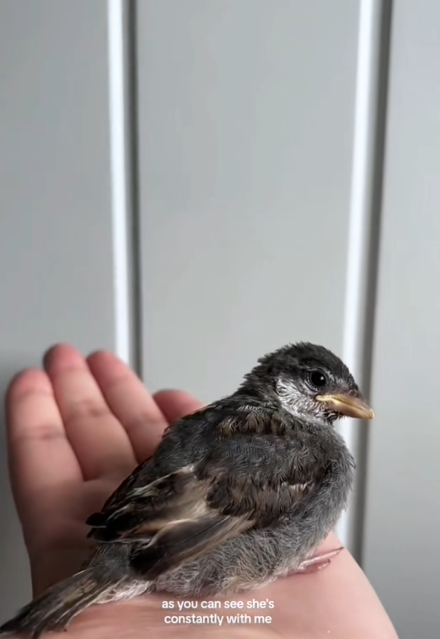
It was a quiet Sunday morning, the kind that begins slowly with the hum of distant birdsong and the aroma of freshly brewed coffee. I had just stepped outside to water the plants when I heard a faint, high-pitched chirp. It wasn’t the usual melody of birds in the trees — this one sounded distressed, weak, and desperate. Curious, I followed the sound, walking carefully across the lawn, past the flower bed, and toward the base of the old maple tree in my backyard.
There, hidden beneath the tangled grass and fallen leaves, was the tiniest bird I had ever seen. Barely covered in feathers, its eyes weren’t fully open, and it trembled with every breath. My heart immediately ached. It must have fallen from a nest above. I looked up and saw a jumble of twigs in the crook of a high branch. The nest was far too high for me to reach, and I couldn’t see or hear the mother bird nearby.
I hesitated. Nature often has its own course, and interfering with wildlife isn’t always the best choice. But this baby bird was so vulnerable, so helpless. I knew that if I walked away, its chances of survival were close to none. Predators, ants, the cold, or even dehydration could claim its life within hours. I couldn’t bear the thought.
Gently, I picked it up using a soft gardening glove. It was unbelievably light, like a tuft of dandelion fluff. I placed it into a small cardboard box, padded with tissue paper, and brought it inside. The first thing I did was look up online what kind of bird it might be and how to care for it. From its appearance — a yellow beak, grayish fuzz, and faint speckles — I guessed it was a sparrow. I also found out that hand-feeding birds is a delicate task that requires warmth, frequent feeding, and a lot of patience.
I fashioned a makeshift nest using a small plastic bowl lined with tissues and placed it on a heating pad set to low. I named the little bird “Chirpy” because of the soft sounds it kept making, even in its weak state. I mixed a simple diet based on the guidance I found — a formula of soft, mashed dog kibble soaked in warm water, delivered with a dropper. The bird responded, opening its beak wide and swallowing eagerly.
The next few days were challenging but magical. I set my alarm every two hours, even at night, to feed Chirpy. His tiny wings twitched as he grew stronger, and the fuzz on his body slowly gave way to soft feathers. During the day, I kept his container near a sunny window so he could get light and stay warm. I also played soft nature sounds so he wouldn’t forget what the outdoors felt like.
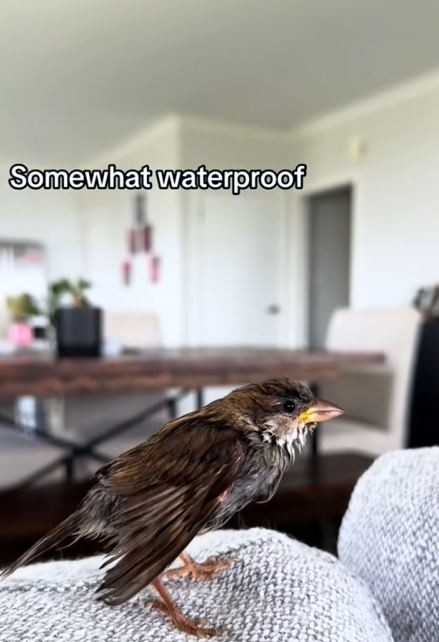
As the days passed, Chirpy’s eyes opened fully. He became more curious and active, fluttering his wings and hopping around the box. It amazed me how quickly he developed. Each day brought a new milestone: the first time he stood on his legs without wobbling, the first time he preened himself, and eventually, the first time he let out a confident little chirp.
I knew from the beginning that the goal was not to keep Chirpy as a pet, but to get him strong enough to return to the wild. That was the hardest part — balancing care with detachment. I didn’t want him to imprint on me too much. So I tried to limit cuddling or talking directly to him. Still, I couldn’t help feeling bonded to this tiny creature who had fought so hard to live.
By the end of the second week, Chirpy was ready to learn how to fly. I transferred him to a larger indoor cage where he could stretch his wings. With a few clumsy flaps and crashes, he eventually got the hang of it. Watching him take flight for the first time inside my living room was breathtaking. He was becoming a real bird.
I began preparing for his release. I reduced hand-feedings and introduced natural food like seeds and crushed berries. I placed a shallow water dish in the cage and left the window open during the daytime. Sometimes wild sparrows would perch on the window sill, chirping and fluttering. Chirpy would respond with excitement, calling back to them. It was a sign. He was ready to join his kind.
On the morning of his release, I carried the cage outside to the backyard — the very place I had found him. My heart was heavy but proud. I opened the cage door and stepped back. Chirpy hesitated, hopping to the edge of the perch. For a few seconds, he looked at me. Then, with a powerful burst of his wings, he flew out into the open air.
He soared up into the trees, not perfectly, but with determination. He landed on a low branch, then another, higher this time. He chirped, loudly and brightly, and then — he was gone.
I stood there, watching the sky, feeling a mix of sadness and immense joy. I had rescued a baby bird — and in doing so, I had learned so much about life, responsibility, and the quiet courage of small creatures. Chirpy reminded me that even the smallest life has value, and that kindness, even in small acts, can change a life forever.
A week later, I heard a familiar chirping near the maple tree. A little bird, looking strikingly like Chirpy, fluttered around the yard before flying off again. Maybe it was him. Maybe he came back to say thank you.
Or maybe — he was just reminding me that in the grand, beautiful cycle of nature, every life has its moment to rise and fly.
